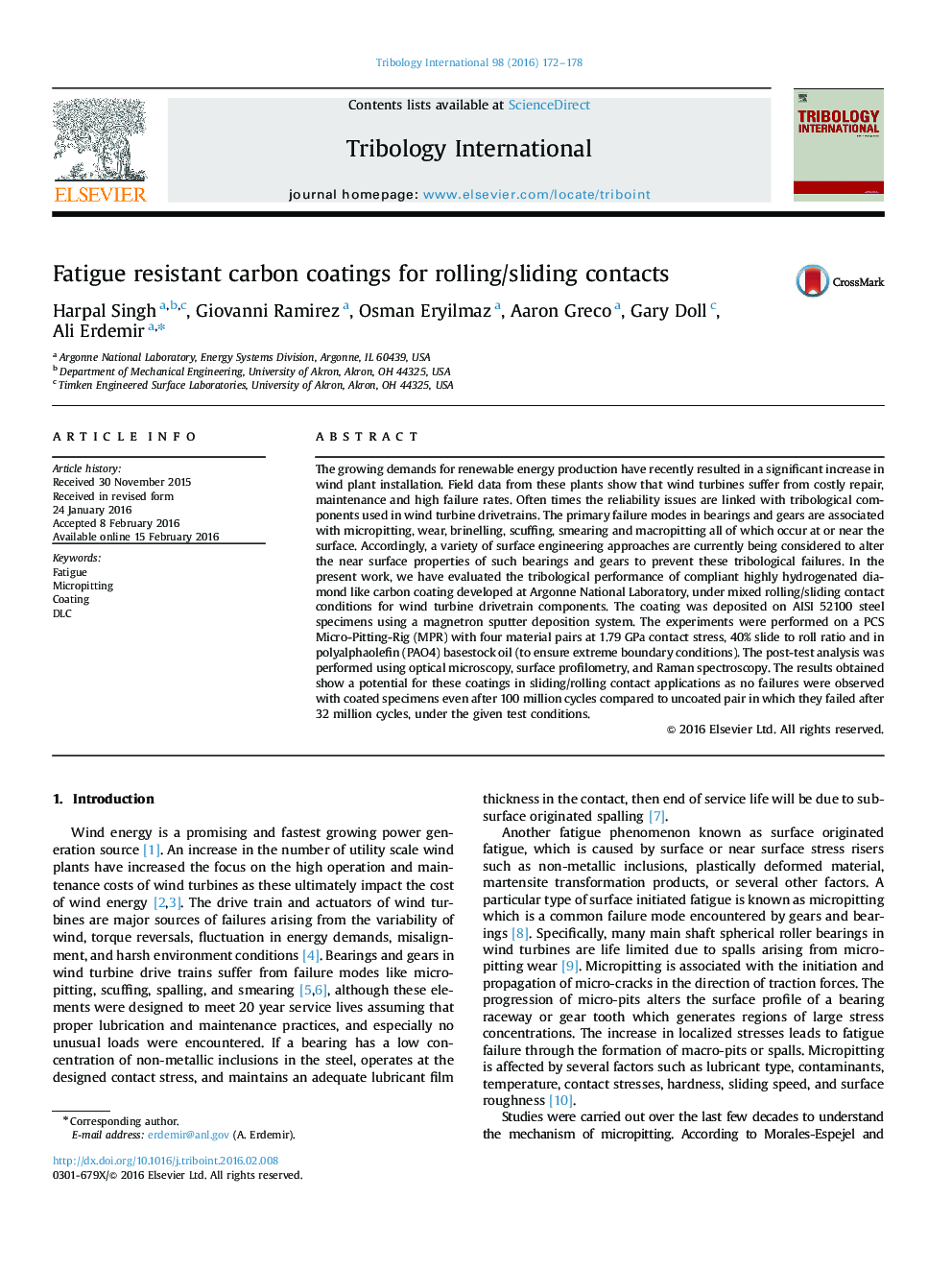| Article ID | Journal | Published Year | Pages | File Type |
|---|---|---|---|---|
| 614369 | Tribology International | 2016 | 7 Pages |
•We developed a soft H-DLC coating for sliding/rolling contact applications.•H-DLC is highly elastic and relatively soft compared to typical DLC (~6 GPa).•Coating mitigates pitting failures in rolling/sliding despite extreme contact conditions.•Improved performance correlated to the transfer layer or tribofilm formation.•Soft H-DLC films can enhance performance of rolling/sliding surfaces of wind turbines.
The growing demands for renewable energy production have recently resulted in a significant increase in wind plant installation. Field data from these plants show that wind turbines suffer from costly repair, maintenance and high failure rates. Often times the reliability issues are linked with tribological components used in wind turbine drivetrains. The primary failure modes in bearings and gears are associated with micropitting, wear, brinelling, scuffing, smearing and macropitting all of which occur at or near the surface. Accordingly, a variety of surface engineering approaches are currently being considered to alter the near surface properties of such bearings and gears to prevent these tribological failures. In the present work, we have evaluated the tribological performance of compliant highly hydrogenated diamond like carbon coating developed at Argonne National Laboratory, under mixed rolling/sliding contact conditions for wind turbine drivetrain components. The coating was deposited on AISI 52100 steel specimens using a magnetron sputter deposition system. The experiments were performed on a PCS Micro-Pitting-Rig (MPR) with four material pairs at 1.79 GPa contact stress, 40% slide to roll ratio and in polyalphaolefin (PAO4) basestock oil (to ensure extreme boundary conditions). The post-test analysis was performed using optical microscopy, surface profilometry, and Raman spectroscopy. The results obtained show a potential for these coatings in sliding/rolling contact applications as no failures were observed with coated specimens even after 100 million cycles compared to uncoated pair in which they failed after 32 million cycles, under the given test conditions.
